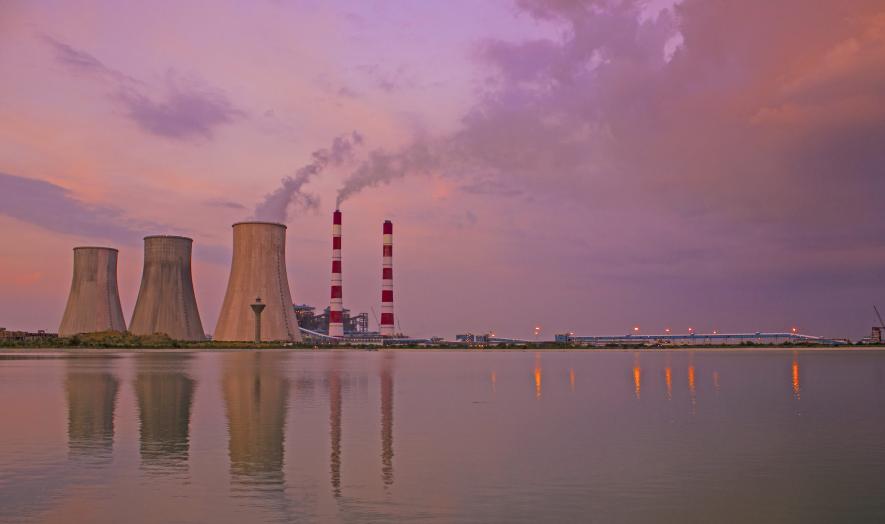Improper fly ash Disposal by Thermal Power Plants Hits Local Communities

Image Courtesy: Wikimedia Commons
New Delhi: A London-based global energy think tank released a report last week saying that per capita coal power emissions have risen by 29% in India over the past seven years. However, emissions from thermal power plants are not the only issue plaguing the country’s coal-based electricity generation industry.
Experts say improper disposal of fly ash, a toxic byproduct generated from coal combustion, often violating government norms, has negatively impacted several communities near power plants.
As per the latest fly ash utilisation report of the Central Electricity Authority (CEA) of India, published in March, thermal power plants could not utilise more than 22% of the toxic byproduct generated from April to September 2022.
As per the emissions report, released by the think tank Ember on September 5, ahead of the G20 Summit, more countries are seeing “decreasing per capita coal emissions as they shift towards clean power”.
However, India and five other G20 nations, China, Japan, Turkey, Russia and Indonesia, had more per capita coal emissions between 2015 and 2022. The study found that Australia and South Korea are the top polluters in per capita coal emissions amongst all the G20 nations.
“India experienced a 29% increase in seven years (+0.2 tCO2). Both [China and India] countries are experiencing rapid electricity demand growth, which is outpacing even the massive renewables expansion in recent years. As a result, their coal-fired generation has also increased in this period,” the report states.
The report further states that while 75 countries worldwide have shown commitment to progressively phase out dependency on coal for electricity generation or not building new coal-powered power plants, India is among seven G20 nations yet to unveil their coal phase-down strategies. The other major nations in this league are the US, China, Japan and Brazil.
A major reason for the increase in coal emissions in India can be attributed to the laxity of Central government agencies in enforcing rules for controlling the release of toxic sulphur oxides from thermal power plants.
Deadlines set by the Union Ministry of Environment, Forest & Climate Change (MoEFCC) to install flue-gas desulphurisation (FGD) equipment in coal-fired power plants to control emissions of sulphurous oxides during coal combustion have been extended regularly owing to non-implementation of rules.
As per the new deadline issued by the ministry, all thermal power plants must compulsorily install FGD systems by December 2025.
At the same time, data released by the CEA in August shows that only 23 of the 600 thermal power stations in the country have installed FGD systems. No units from the 221 thermal power stations owned by different state governments have installed FGD equipment. Only 8 of the 168 Central government stations have installed the systems while 15 units from the 211 stations owned by private entities have installed FGD systems.
Out of the total installed capacity of 2,11,519.50 megawatt (MW) of thermal power generation in the country, FGD systems have been installed for 9,940 MW only.
“Emission of toxic gases from coal combustion is not the only issue with thermal power plants in India as environmental pollution is concerned,” Sunil Dahiya, an analyst with the Centre for Research on Energy and Clean Air, an independent research organisation, told this journalist.
“Improper disposal of fly ash generated as a byproduct from coal burning has serious implications for India in terms of adverse health impact upon communities living in the vicinity of thermal power plants,” he added.
As per the March CEA report, compiled by collecting data from 175 thermal power stations, 142.07 million tonnes (MT) of fly ash was generated by the combustion of 401.15 MT of coal. However, only 78.14% (111.01 MT) of the fly ash generated was utilised by power plants under Central government norms.
This is the lowest percentage utilisation rate of fly ash recorded in the past three half-yearly CEA studies. The total quantity of fly ash lying unutilised, including legacy ash in operational dykes, non-operational dykes, ash ponds and so on—in these power plants is a massive 1,677.30 MT.
“In terms of economic impacts, fly ash has a huge impact on the livelihood of local communities because its improper disposal often adversely impacts farming by polluting water sources and damaging standing crops. India is one of the countries that has witnessed the worst impacts of fly ash on wildlife, forests and natural water bodies,” Dahiya said.
Often, local communities living near thermal power plants have come face to face with authorities over damages caused to their livelihood by improper fly ash disposal.
In August, fishing communities from eight villages of Tamil Nadu protested alleging adverse impacts to their livelihood by indiscriminate disposal of fly ash by thermal power plants into the Ennore creek, along the coast of the Bay of Bengal.
It was alleged that the creek had turned toxic from the fly ash. It also resulted in the depletion of the fish population, impacting the livelihood of fish worker communities.
Incidents of fly ash slurry flooding human habitations and agricultural fields have been reported from various parts of the country from time to time. The floods occurred due to the breach of dykes of fly ash ponds within thermal power plants. Incidentally, there’s no mechanism to construct and operate robust dykes that withstand breaching.
Numerous incidents of fly ash flooding, which have wreaked havoc on local communities, have been reported from Madhya Pradesh’s Singrauli district, an area that has several public and private thermal power plants.
Fly ash flooding has also been reported in the past from Jharkhand’s Bokaro district.
Further, reckless transportation of fly ash from power plants to be used in cement or brick manufacturing industries also results in air pollution and contamination of water bodies. In July, the West Bengal government alleged that barges carrying fly ash from India to Bangladesh through the Sundarbans is not only polluting the wetlands but also eroding the coasts of islands within the wetland area.
Javed Khan, the state’s minister of disaster management, reportedly pointed out during a workshop that Central government agencies needed to take stock of the pollution caused by these fly ash barges. On average, around 40 barges carrying fly ash for cement manufacturing industries of Bangladesh ply through the ecologically fragile Sundarbans.
Members of the Dakshinbanga Matsyajibi Forum, a fish workers forum of West Bengal, allege that frequent capsizing of barges carrying fly ash from India to Bangladesh has adversely impacted the ecology of the Sundarbans.
The livelihood of thousands of traditional fish workers’ families has been hit as the capsizing of barges and the resultant release of toxic fly ash into the waters has adversely impacted the riverine ecology of the Sundarbans.
“Only old and worn-out barges are regularly used for fly ash transportation through the Sundarbans. In the past, agencies responsible did not even care to fish out capsized barges from the waters,” Milon Das, a member of the fish workers forum, said.
“After our complaints, capsized barges are being fished out. But no action is taken to remove fly ash discharged into the waters whenever a loaded barge capsizes. The toxic ash leads to depletion in the fish population and adversely impacts marine ecology. There is no prospect of catching fish within a huge radius of the area where a loaded barge capsizes,” he added.
Transportation of fly ash using old and worn-out barges, it has been alleged, violated norms. In December 2013, the Central Pollution Control Board (CPCB) issued a detailed set of guidelines for the transportation of fly ash, including ferried through waterways.
As per these guidelines, only “dedicated” boats and barges should be used for fly ash transportation. The guidelines further state that a “specially designed jetty with automatic loading and unloading system” for transporting fly ash should also be developed.
A petition filed by the Dakshinbanga Matsyajibi Forum demanding that only fit and seaworthy vessels be used for the transportation of fly ash from coasts is pending at the National Green Tribunal.
The writer is an independent journalist.
Get the latest reports & analysis with people's perspective on Protests, movements & deep analytical videos, discussions of the current affairs in your Telegram app. Subscribe to NewsClick's Telegram channel & get Real-Time updates on stories, as they get published on our website.
























